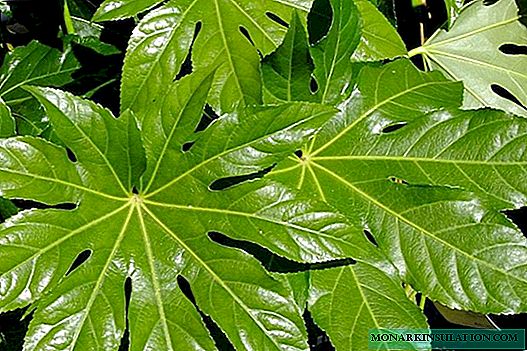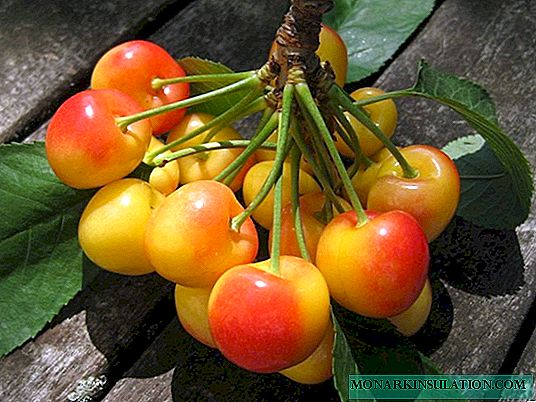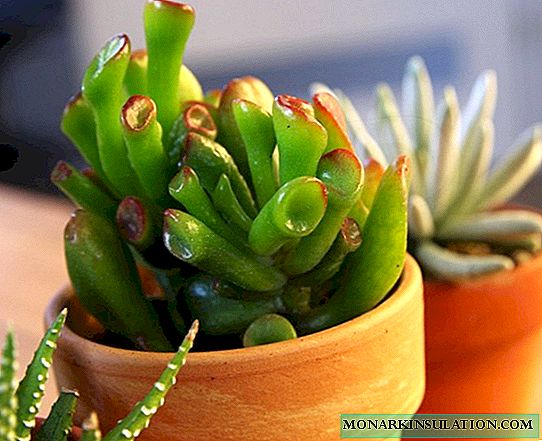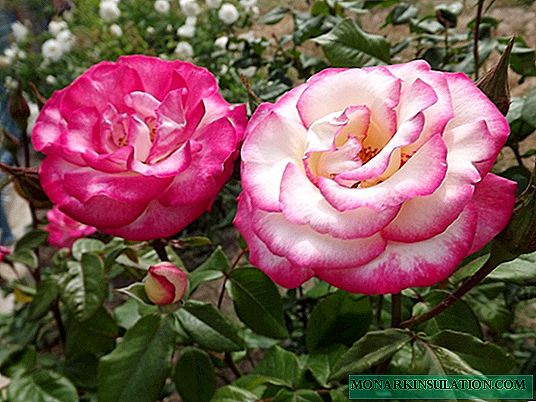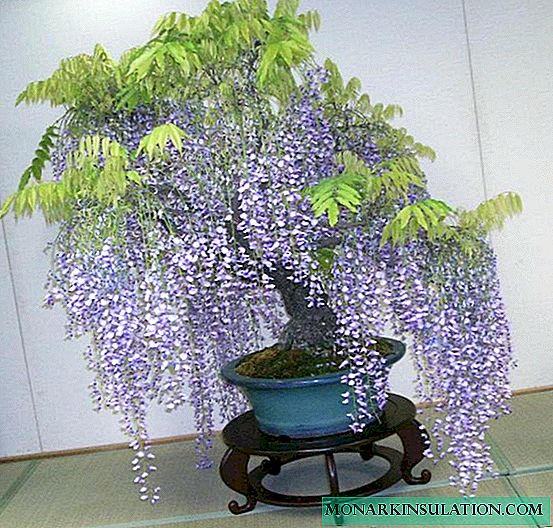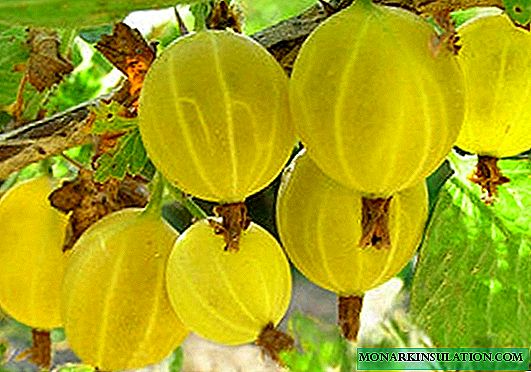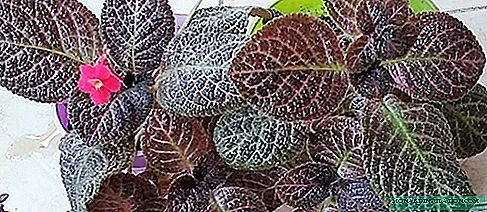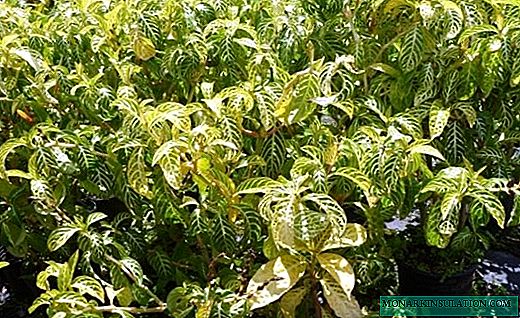Sanchez strikes with unusual shapes and colors. It is noteworthy to everyone: with variegated leaves and a lush, bright inflorescence with a pleasant smell. This exotic plant is common in the moist equatorial forests of Ecuador, as well as in the tropics of Brazil and Peru. The plant belongs to the Acanthus family. In nature, there are not many types of sanchezia, and in culture only two of them are used.

Plant description
Sanchezia flower is a sprawling evergreen shrub. Its height in the natural environment is 80-90 cm. The fleshy, soft stems have a tetrahedral section and a smooth pinkish surface. Gradually, the stems are lignified and darker. Branches shoot from the base and along the entire length. The annual growth is 20-25 cm.
The leaves are opposite on dense, shortened petioles; they have an oval shape. The sides of the leaf plate are solid or covered with small teeth, and the end is pointed. The central and lateral veins of a dark green leaf are drawn in a contrasting white or yellowish stripe. The length of the leaves can reach 25 cm. The largest specimens are formed on young, apical shoots.














During flowering, a loose spike-shaped inflorescence of many small, tubular flowers forms at the top. It stands high above the leaves. Flower petals are painted in orange or hot pink. Their base grows together in a long tube, and the rounded edges are slightly bent back. The flower is about 5 cm long. Long flexible ovaries and stamens peek out from the tube.
Flowers are pollinated by hummingbirds; pollination and fruiting do not occur in culture. The fruit of sanchezia is a two-clump seed box. When it ripens, its walls crack and small seeds scatter in the wind.
Types of Sanchezia
Although botanists have recorded nearly 50 species of sanchezia, only two of them are used in culture. They are the most attractive and can adapt to room conditions.
Sanchez is noble. Branched, wide enough stems are covered with green bark with a slight pink tinge. The shrub quickly grows green mass and can grow 2 meters from the ground. Dark green leaves are covered with a colorful pattern. In length they can reach 30 cm, and in width - 10 cm. When grown indoors, the sizes of leaves and branches are much more modest.

Sanchezia is small-leaved. The plant forms a compact, but sprawling bush. Its branches have a darker, chestnut color. Young shoots cover large oval leaves with a rounded edge. Leaflets also have a characteristic pattern with a slight pinkish tint.

Exotic sanchezia can be bought at almost any flower shop, they are very popular with flower growers.
Growing
Reproduction of sanchezia occurs vegetatively. For this, apical petioles are used, 8-12 cm long with 4-6 leaves. The lower leaves are cut and rooted cuttings in a mixture of peat with perlite. For 2 weeks, the cuttings are covered with a film. Soil and air temperature should be +24 ° C. Every day, the greenhouse is ventilated and sprayed soil from the spray.
After rooting, the shelter from the cuttings can be removed. Another 2 weeks they are grown in the same substrate, and then transplanted into separate containers. When planting, small diameter pots with soil for adult plants are used.

You can also propagate sanchezia with a leaf. Leaflets cut off at the base of the petiole are rooted in water. Water is changed regularly so that mold does not develop. After the appearance of small white roots, seedlings can be rooted in fertile, garden soil.
Care Rules
Sanchezia is easy to care for and even in adverse conditions maintains a high decorative effect. For active growth, she needs a bright, diffused light, a small shadow is also acceptable. The air temperature can be between + 18 ... +25 ° C. In winter, Sanchezia can withstand cold weather up to +12 ° C. Sudden changes and drafts are undesirable. In summer, it is recommended to take the plant out of a stuffy room to the garden or balcony.

Sanchezia constantly needs high humidity. It is necessary to spray leaflets several times a day with purified water, arrange trays with wet pebbles, and in winter resort to using an air humidifier. Once a season, the plant is bathed in a warm shower to get rid of pollution. It is better to cover the earth with a film. During the flowering period, bathing and spraying is stopped. If drops of water accumulate in the flowers, they will develop rot and the plant may become sick.
Watering should be plentiful and regular so that only the top of the soil dries out. Water for irrigation should be very warm (up to +45 ° C). With cooling, the frequency and volume of watering is reduced, and watering after pruning is also reduced. A sign of water shortage is drooping leaves. They quickly crumble if the situation is not corrected.

From April to September, twice a month or less, Sanchezia is fertilized with complex compositions for flowering plants.
In the spring, it is recommended to trim part of the crown. It stimulates the flowering and growth of larger leaves, and also helps to get rid of bare old branches. The flower stalk after wilting buds is also immediately cut off.
Transfer
Sanchezia transplant is performed every 1-2 years in early spring. The pot is chosen of medium depth and a size larger than the previous one in width. The bottom is lined with drainage material. The soil for planting should be moderately fertile and very light. Suitable composition of:
- clay-soddy soil;
- peat;
- sheet soil;
- deciduous humus;
- river sand.

When transplanting, it is necessary, if possible, to remove the old earth from the roots to prevent excessive acidification and the development of rot. For better breathability, it is recommended to periodically loosen the surface of the substrate.
Diseases and Pests
Sanchez is resistant to most diseases. With constant stagnation of moisture, root rot can develop. Juicy shoots attract scale insects and aphids. Most often they can be seen on the underside of the leaf along the fleshy veins. It is worth trying to wash the leaves and treat them from parasites with soapy water. If the problem persists, a modern insecticide should be used. After 2 treatments with a break of a week, the insects will leave Sanchezia alone for a long time, even if it is in the garden.

